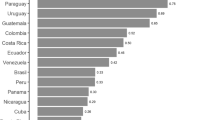Abstract
There are two striking epidemiological features of testicular cancer. First, the incidence has increased strongly over the past few decades. Secondly, the incidence is greatest among younger men, and then declines from a certain age. We have constructed a statistical model to fit these observations. The idea of the model is that a subgroup of men is particularly susceptible to testicular cancer. In statistical terminology this is called a frailty model, since it focuses on varying frailty of the individuals. The frailty, or susceptibility, is considered as being established by birth, and due to a mixture of genetic and environmental effects. The strong increase in incidence over calendar time points to strong environmental effects, which are thought to operate in fetal life, causing damage to the fetus. Based on data from the Norwegian Cancer Registry we fit a frailty model to incidence data collected during 1953–93. The model gives a good fit and we discuss the interpretations of our findings.
Similar content being viewed by others
References
Wanderås EH, Tretli S, Fosså SD (1995) Trends in incidence of testicular cancer in Norway 1955–1992. Eur J Cancer 31A: 2044-2048.
Henderson BE, Ross R, Bernstein L (1988) Estrogens as a cause of human cancer: the Richard and Hinda Rosenthal Foundation Award Lecture. Cancer Res 48: 246-253.
Swerdlow AJ (1997) Epidemiology of testicular cancer. In: Raghavan D, Scher HI, Leibel SA, Lange D, eds. Principles and Practice of Genitourinary Oncology. New York: Lippincott-Raven, pp. 643-652.
Hougaard P (1984) Life table methods for heterogeneous populations: distributions describing the heterogeneity. Biometrika 71: 75-83.
Aalen OO (1988) Heterogeneity in survival analysis. Stat Med 7: 1121-1137.
Aalen OO (1994) Effects of frailty in survival analysis. Stat Methods Med Res 3: 227-243.
Aalen OO (1992) Modelling heterogeneity in survival analysis by the compound Poisson distribution. Ann Appl Probab 2: 951-972.
Armitage P, Doll R (1954) The age distribution of cancer and a multi-stage theory of carcinogenesis. Br J Cancer 8: 1-15.
Day NE, Brown CC (1980) Multistage models and primary prevention of cancer. J Natl Cancer Inst 64: 977-989.
Jørgensen N, Giwercman A, Müller J, Skakkebaek NE (1993) Immunohistochemical markers of carcinoma in situ of the testis also expressed in normal infantile germ cells. Histopathology 22: 373-378.
Fahrmeir L, Tutz G (1994) Multivariate Statistical Modelling Based on Generalized Linear Models. New York: Springer-Verlag.
Wanderås EH, Grotmol T, Fosså SD, Tretli S (1998) Maternal health and pre-and perinatal characteristics in the etiology of testicular cancer: a prospective register-based study on Norwegian males born between 1967 and 1995. Cancer Causes Control 9: 475-486.
Aakre O, Ekbom A, Hsieh CC, Trichopoulos D, Adami HO (1996) Testicular nonseminoma and seminoma in relation to perinatal characteristics. J Natl Cancer Inst 88: 883-889.
IARC (1987) Overall Evaluations of Carcinogenicity: An updating of IARC Monographs Volumes 1 to 42. Lyon: IARC Monographs, Suppl. 7: 273-76.
von der Maase H, Röhrt M, Walbom Jörgensen S, et al. (1986) Carcinoma in situ of contralateral testis in patients with testicular germ cell cancer: study of 27 cases in 500 patients. Br Med J Clin Res Ed 293: 1398-1401.
Giwercman A, Bruun E, Frimodt Möller C, Skakkebaek NE (1989) Prevalence of carcinoma in situ and other histopathological abnormalities in testis with a history of cryptorchidism. J Urol 142: 998-1001.
Loy V, Wigland I, Dieckmann KP (1990) Incidence and distribution of carcinoma in situ in testis removed for germ cell tumor: possible inadequacy of random testicular biopsy in detecting the condition. Histopathology 16: 198-200.
Møller H (1993) Clues to the aetiology of testicular germ cell tumours from descriptive epidemiology. Eur Urol 23: 8-15.
Giwercman A, Müller J, Skakkebaek NE (1991) Prevalence of carcinoma in situ and other histopathological abnormalities in testes from 399 men who died suddenly and unexpectedly. J Urol 145: 77-80.
Heimdal K, Olsson H, Tretli S, Flodgren P, Børresen A-L, Fosså SD (1996) Familial testicular cancer in Norway and Southern Sweden. Br J Cancer 73: 964-969.
Aalen OO (1991) Modelling the influence of risk factors on familial aggregation of disease. Biometrics 47: 933-945.
Khoury JM, Beaty TH, Liang KY (1988) Can familial aggregation of disease be explained by familial aggregation of environmental risk factors? Am J Epidemiol 127: 674-683.
Heimdal K, Olsson H, Tretli S, Fosså SD, Borresen AL, Bishop DT (1997) A segregation analysis of testicular cancer based on Norwegian and Swedish families. Br J Cancer 75: 1084-1087.
Author information
Authors and Affiliations
Rights and permissions
About this article
Cite this article
Aalen, O.O., Tretli, S. Analyzing incidence of testis cancer by means of a frailty model. Cancer Causes Control 10, 285–292 (1999). https://doi.org/10.1023/A:1008916718152
Issue Date:
DOI: https://doi.org/10.1023/A:1008916718152




